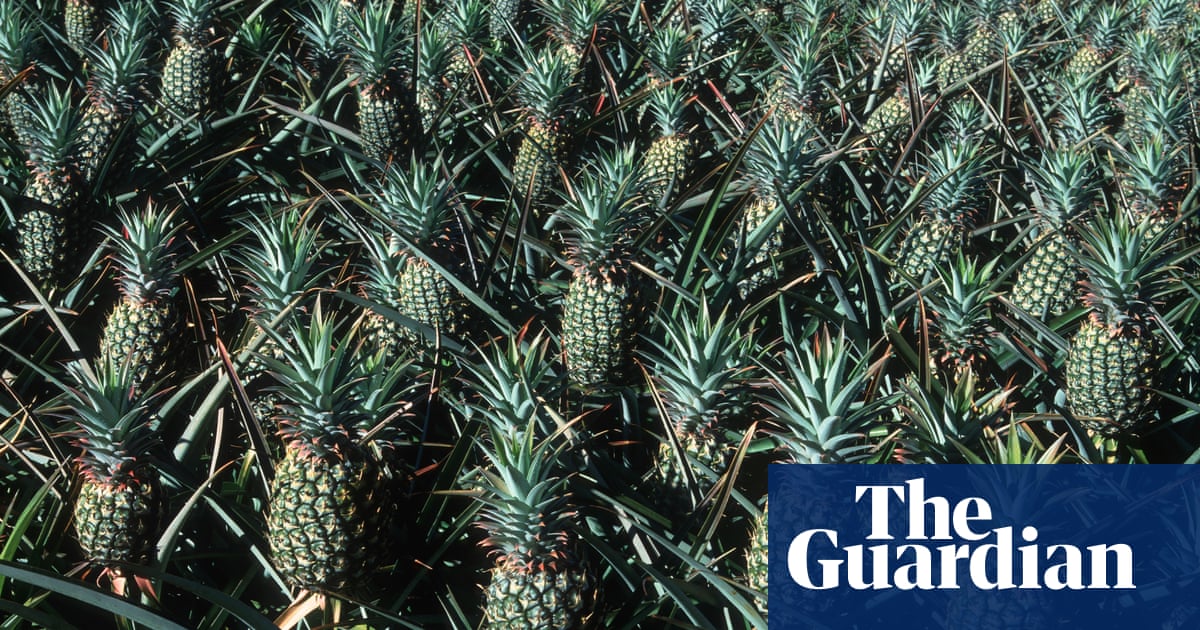Land privatization and water depletion set the stage for the Lahaina fire 150 years ago. Now, land companies may benefit even more
In the late 18th century, when the Hawaiian Kingdom became a sovereign state, Lahaina carried such an abundance of water that early explorers reportedly anointed it “Venice of the Pacific”. A glut of natural wetlands nourished breadfruit trees, extensive taro terraces and fishponds that sustained wildlife and generations of Native Hawaiian families.
But more than a century and a half of plantation agriculture, driven by American and European colonists, have depleted Lahaina’s streams and turned biodiverse food forests into tinderboxes. Today, Hawaii spends $3bn a year importing up to 90% of its food. This altered ecology, experts say, gave rise to the 8 August blaze that decimated the historic west Maui town and killed more than 111 people.
“The rise of plantation capital spawned the drying of the west side of Maui,” said Kamana Beamer, a historian and a former member of the Hawaii commission on water resource management, which is charged with protecting and regulating water resources. “You can see the link between extractive, unfettered capitalism at the expense of our natural resources and the ecosystem.”
Drawn to Hawaii’s temperate climate and prodigious rainfall, sugar and pineapple white magnates began arriving on the islands in the early 1800s. For much of the next two centuries, Maui-based plantation owners like Alexander & Baldwin and Maui Land & Pineapple Company reaped enormous fortunes, uprooting native trees and extracting billions of gallons of water from streams to grow their thirsty crops. (Annual sugar cane production averaged 1m tons until the mid-1980s; a pound of sugar requires 2,000lb of freshwater to produce.)
Invasive plants that were introduced as livestock forage, like guinea grass, now cover a quarter of Hawaii’s surface area. The extensive use of pesticides on Maui’s pineapple fields poisoned nearby water wells.
The dawn of large-scale agriculture dramatically changed land practices in Maui, where natural resources no longer served as a mode of food production or a habitat for birds but a means of generating fast cash, said Lucienne de Naie, an east Maui historian and chair of the Sierra Club Maui group.
n the late 18th century, when the Hawaiian Kingdom became a sovereign state, Lahaina carried such an abundance of water that early explorers reportedly anointed it “Venice of the Pacific”. A glut of natural wetlands nourished breadfruit trees, extensive taro terraces and fishponds that sustained wildlife and generations of Native Hawaiian families.
But more than a century and a half of plantation agriculture, driven by American and European colonists, have depleted Lahaina’s streams and turned biodiverse food forests into tinderboxes. Today, Hawaii spends $3bn a year importing up to 90% of its food. This altered ecology, experts say, gave rise to the 8 August blaze that decimated the historic west Maui town and killed more than 111 people.
“The rise of plantation capital spawned the drying of the west side of Maui,” said Kamana Beamer, a historian and a former member of the Hawaii commission on water resource management, which is charged with protecting and regulating water resources. “You can see the link between extractive, unfettered capitalism at the expense of our natural resources and the ecosystem.”
…
archive link: https://archive.is/of1Ln



Removed by mod